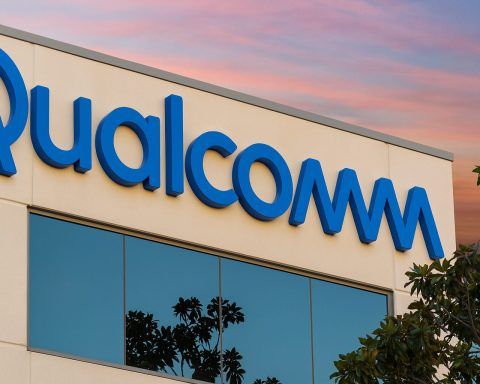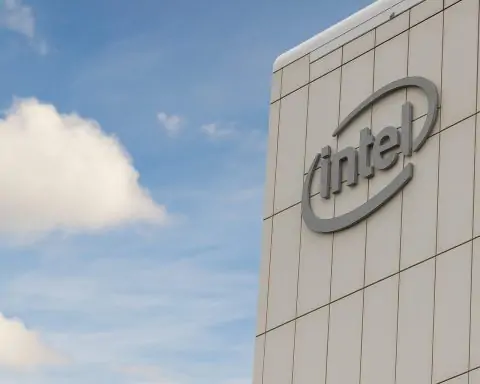Apple’s Next iPhone May Come with a Higher Price Tag
- Tariffs to Blame: Analysts say Apple’s upcoming iPhone 17 models will “likely” cost $50–$100 more than the iPhone 16 series in the U.S., largely due to new import tariffs [1]. Apple currently pays a 20% tariff on China-made iPhones (none on those from India), pushing it to shift production; “the majority of the iPhones sold in the U.S. are imported from India” now, CEO Tim Cook noted [2].
- Possible Storage Boost: To soften a price hike, Apple might double base storage on the iPhone 17 Pro (from 128GB to 256GB) so customers feel they’re getting more value despite a higher price [3]. Apple has impressively kept the Pro model at a $999 starting price since 2017 [4], but with costs rising, nothing lasts forever in pricing, one report quips [5].
- Design Shake-Up Rumors: A reputed Weibo leak claims the iPhone 17 Pro will abandon its recent titanium frame and revert to an aluminum frame with a glass back section, improving wireless charging and reducing weight [6]. Apple’s standard models already use aluminum, so this change on Pro models would be notable. “Romo is DJI’s first foray into home cleaning, moving beyond aerial intelligence,” says DJI’s strategy director Zhang Xiaonan, hinting the company sees smart-home gadgets as a natural next step [7]. (Update: Apple will officially unveil the iPhone 17 lineup in September.)
Trump Targets Intel’s CEO, Raising Chip Industry Jitters
- Political Pressure: U.S. President Donald Trump publicly demanded that Intel CEO Lip-Bu Tan resign, calling Tan “highly conflicted” due to his investments in hundreds of Chinese tech firms [8]. (A Reuters investigation found some of Tan’s past investments were linked to China’s military [9].) The unusual call-out comes as Tan is struggling to turn around the ailing chipmaker Intel.
- Turnaround at Risk: Industry watchers fear Trump’s intervention could distract from Intel’s comeback plan. Tan may now have to spend energy convincing Washington he’s the right person for the job instead of focusing on cost-cutting and product strategy [10]. “It is distracting,” said Ryuta Makino of Gabelli Funds (an Intel investor). “Trump will make goals for Intel to spend more, and I don’t think Intel has the capabilities to spend more, like what Apple and Nvidia are doing.” [11] This implies pressure to invest in U.S. manufacturing or R&D could strain Intel’s resources.
- Broader Chip Tensions: The episode highlights ongoing U.S.-China tech tensions. Washington has tightened chip export controls over security fears, and now a U.S. president weighing in on a CEO’s China ties is an extraordinary twist. Intel has not formally responded to Trump’s remarks, but the situation underscores how geopolitics are increasingly intertwined with tech leadership decisions [12] [13]. Investors will be watching if Tan stays or goes – and how Intel navigates this political storm while rivals race ahead in AI and chip innovation.
Trump Family’s Crypto Venture Seeks $1.5 Billion Windfall
- $WLFI Fundraising:World Liberty Financial, a cryptocurrency venture co-founded by Donald Trump and his sons, is reportedly shopping for a $1.5 billion investment to create a new publicly traded holding company for its tokens [14]. According to Bloomberg News, the Trump-backed platform has already approached major crypto and tech investors about the deal (still in early stages) [15].
- Regulatory Loophole: Notably, World Liberty’s token ($WLFI) is not classified as a security by the SEC, meaning it isn’t subject to the strict regulations that govern stocks [16]. That status could make it easier to raise funds, although it also raises eyebrows. The venture’s website touts itself as a “decentralised platform” and claims to have earned the Trump family around $500 million to date, Reuters calculated [17].
- Context: This crypto fundraising push comes amid a broader crypto market rebound. It’s also unusual to see a former U.S. president so directly tied to a crypto project. World Liberty declined to comment on the fundraising report [18], and Reuters has not independently verified Bloomberg’s sources. If the $1.5B goal is met, it would mark one of the larger crypto raises this year – and cement the Trump family’s deepening stake in the digital asset world [19] [20].
Google Hack Exposes Millions of Business Contacts in Salesforce Breach
- Data Heist Confirmed: Google revealed that a June 2025 cyberattack compromised one of its internal Salesforce databases, exposing contact information and notes for small & medium business customers [21] [22]. The breach – attributed to the notorious hacker group ShinyHunters (tracked by Google as UNC6040) – was confirmed publicly after Google finished notifying affected clients on August 8 [23] [24].
- Voice Phishing Entry: The attackers gained access via social engineering: they impersonated IT support in sophisticated voice phishing (“vishing”) calls to trick Google employees, then had them install a trojanized Salesforce data loader app [25]. By getting staff to authorize what looked like a legitimate app, the hackers opened a backdoor into Google’s CRM system and exfiltrated approximately 2.55 million records of business customer data [26].
- Google’s Response: Google says the stolen info was mostly “basic and largely publicly available business information, such as business names and contact details”, not highly sensitive personal data [27]. The intrusion was contained “within a small window of time” before being cut off [28]. Google immediately terminated the attackers’ access, investigated the scope, and boosted security to prevent a repeat [29]. Importantly, no Google Ads, Analytics, or payment data was affected [30].
- Hacker Demands: ShinyHunters – which has hit Cisco, Qantas, Adidas and others in 2025 – typically extorts victims months after stealing data [31]. In Google’s case, the group demanded 20 Bitcoin (~$2.3 million) for ransom, though they later claimed this was just “for the lulz” rather than a serious extortion attempt [32]. The brazenness of that comment underscores the group’s confidence. Google, for its part, has not indicated any ransom was paid and is likely cooperating with law enforcement as ShinyHunters continues its crypto-extortion spree.
University Cyberattack Affects 870,000 People’s Data
- Massive Breach at Columbia:Columbia University (New York) confirmed that a cyberattack earlier this year exposed personal data of nearly 870,000 individuals – including current and former students, applicants, faculty, and staff [33]. The attackers accessed a trove of sensitive information: names, birth dates, Social Security numbers, contact info, demographic details, academic records, financial aid data, and even some health insurance info [34] [35]. (Medical records from Columbia’s hospital system were not affected.)
- Stealthy Intrusion: The breach began in mid-May but went unnoticed for weeks. It only came to light after a major system outage on June 24 tipped off IT staff that something was wrong [36]. By then, the attackers had been quietly siphoning data. It took investigators until early August to forensically map out exactly what was accessed and who was impacted [37] – hence the public disclosure was delayed until now, after notification letters went out.
- University Response: Columbia is offering two years of free credit monitoring and identity theft protection to those affected [38] [39]. The university is also meeting regulatory obligations: given the nature of the data (education records, SSNs, etc.), Columbia must notify multiple state and federal authorities [40]. The case underscores that campuses are prime targets (they hold extensive personal data but often have open IT environments). Columbia noted it’s enhancing security and urged vigilance against phishing, since the stolen mix of personal details “makes phishing and fraud more likely” in the aftermath [41].
Space Triumph: Astronauts Splash Down off California Coast
- Historic Pacific Landing: In a scene reminiscent of the Apollo era, a SpaceX Crew Dragon capsule carrying four astronauts splashed down in the Pacific Ocean on August 9 – NASA’s first crewed Pacific recovery in 50 years [42]. The multinational crew (NASA’s Anne McClain and Nichole Ayers, JAXA’s Takuya Onishi, and Roscosmos’ Kirill Peskov) returned after 5 months on the ISS, parachuting into the sea off Southern California a day after undocking [43] [44]. “Welcome home,” SpaceX Mission Control radioed as recovery teams secured the bobbing capsule [45].
- Science Cargo on Board: The returning astronauts brought back a “trove of experiments… important and time-sensitive research” conducted in microgravity [46]. This included biological samples and materials science data that were handed off to scientists moments after splashdown [47]. NASA noted the successful mission advances its goals for commercial crew flights.
- Crew Commentary: Before leaving orbit, Commander McClain reflected on the mission’s unity in a time of global challenges. “We want this mission… to be a reminder of what people can do when we work together, when we explore together,” McClain said, alluding to “tumultuous times on Earth” and the inspiration of international cooperation in space [48].
- SpaceX’s Milestone: This was SpaceX’s third human splashdown in the Pacific, and a first for a NASA crew – previous Crew Dragon landings were in the Atlantic/Gulf. SpaceX shifted to West Coast landings to avoid debris risks over busy shipping lanes and populated areas in Florida [49]. The successful return further cements SpaceX’s role as a workhorse for U.S. crew transport. (Notably, the last NASA Pacific splashdown was in 1975, concluding the Apollo-Soyuz mission [50].) With this mission, NASA’s Crew-10 flight sets the stage for more routine ocean recoveries on both coasts.
Drone Giant DJI Debuts Robot Vacuum with Drone-Level Smarts
- From Skies to Floors:DJI, known for its drones, made a surprise entry into home tech by unveiling “Romo” robot vacuums that leverage its aerial obstacle-avoidance tech. The new DJI Romo vacuum cleaner comes with drone-caliber sensors (binocular fisheye cameras and laser radars), enabling it to detect even ultra-thin obstacles like power cords and navigate complex furniture layouts with ease [51]. Essentially, DJI transplanted the visual perception and AI mapping expertise from its drones into a smart vacuum.
- Hands-Free Cleaning: DJI boasts that Romo provides a “zero-intervention” user experience. The robot dynamically adjusts its path in real time and isn’t fazed by dark or reflective surfaces that trip up other vacuums [52] [53]. It even has flexible dual robotic arms to reach into corners and around table legs, plus a self-emptying, self-cleaning base station that washes its mop, clears dust, and sterilizes itself automatically [54] [55]. From automatic dirt disposal to app alerts for maintenance, Romo aims to minimize manual involvement.
- DJI’s Strategy: The move signals DJI’s diversification beyond flying devices. “Romo is DJI’s first foray into home cleaning, moving beyond aerial intelligence,” said Zhang Xiaonan, the company’s strategy director [56]. He noted consumers now expect robot vacuums to be smarter and more autonomous, and DJI is positioning Romo as a high-end solution for tech-savvy homes.
- Launch Details: The Romo series (three models with transparent design options) debuted in China this week, priced from around $650 for the base model [57]. DJI plans to roll it out internationally later this year [58]. At that pricing, Romo will compete with premium robot vacuums from the likes of iRobot, Roborock, and others – betting that its drone-derived smarts and futuristic see-through look can win over buyers. Early reviews in Chinese tech media highlight the “drone-level obstacle avoidance” as Romo’s killer feature [59], potentially setting a new bar for the smart home cleaning market.
Sources: The information in this report is drawn from Reuters, Bloomberg, Associated Press, MacRumors, Security Boulevard, CyberSecurity News, and other reliable outlets as cited above [60] [61]. All quotes and data points are referenced to their original reporting for verification. This comprehensive roundup excludes AI-focused news to spotlight other tech sectors making headlines in the past 48 hours.
References
1. www.macrumors.com, 2. www.macrumors.com, 3. www.macrumors.com, 4. www.macrumors.com, 5. www.macrumors.com, 6. www.macrumors.com, 7. dronedj.com, 8. www.reuters.com, 9. www.reuters.com, 10. www.reuters.com, 11. www.reuters.com, 12. www.reuters.com, 13. www.reuters.com, 14. www.reuters.com, 15. www.reuters.com, 16. www.reuters.com, 17. www.reuters.com, 18. www.reuters.com, 19. www.reuters.com, 20. www.reuters.com, 21. cybersecuritynews.com, 22. cybersecuritynews.com, 23. cybersecuritynews.com, 24. cybersecuritynews.com, 25. cybersecuritynews.com, 26. cybersecuritynews.com, 27. cybersecuritynews.com, 28. cybersecuritynews.com, 29. cybersecuritynews.com, 30. cybersecuritynews.com, 31. cybersecuritynews.com, 32. cybersecuritynews.com, 33. securityboulevard.com, 34. securityboulevard.com, 35. securityboulevard.com, 36. securityboulevard.com, 37. securityboulevard.com, 38. securityboulevard.com, 39. securityboulevard.com, 40. securityboulevard.com, 41. securityboulevard.com, 42. abcnews.go.com, 43. abcnews.go.com, 44. abcnews.go.com, 45. abcnews.go.com, 46. ts2.tech, 47. ts2.tech, 48. abcnews.go.com, 49. abcnews.go.com, 50. abcnews.go.com, 51. dronedj.com, 52. dronedj.com, 53. dronedj.com, 54. dronedj.com, 55. dronedj.com, 56. dronedj.com, 57. dronedj.com, 58. dronedj.com, 59. amp.scmp.com, 60. www.reuters.com, 61. abcnews.go.com










